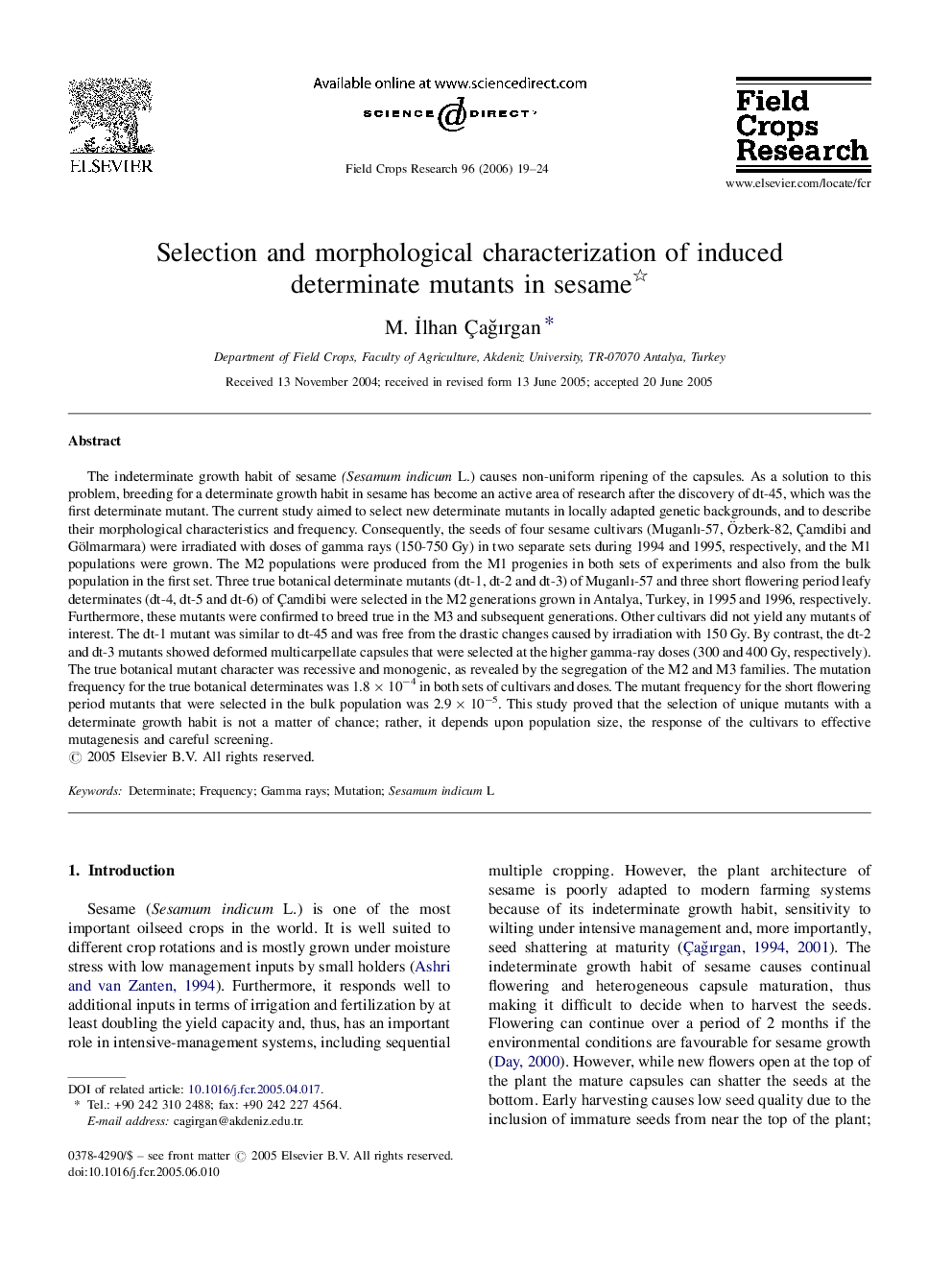| Article ID | Journal | Published Year | Pages | File Type |
|---|---|---|---|---|
| 4511885 | Field Crops Research | 2006 | 6 Pages |
The indeterminate growth habit of sesame (Sesamum indicum L.) causes non-uniform ripening of the capsules. As a solution to this problem, breeding for a determinate growth habit in sesame has become an active area of research after the discovery of dt-45, which was the first determinate mutant. The current study aimed to select new determinate mutants in locally adapted genetic backgrounds, and to describe their morphological characteristics and frequency. Consequently, the seeds of four sesame cultivars (Muganlı-57, Özberk-82, Çamdibi and Gölmarmara) were irradiated with doses of gamma rays (150-750 Gy) in two separate sets during 1994 and 1995, respectively, and the M1 populations were grown. The M2 populations were produced from the M1 progenies in both sets of experiments and also from the bulk population in the first set. Three true botanical determinate mutants (dt-1, dt-2 and dt-3) of Muganlı-57 and three short flowering period leafy determinates (dt-4, dt-5 and dt-6) of Çamdibi were selected in the M2 generations grown in Antalya, Turkey, in 1995 and 1996, respectively. Furthermore, these mutants were confirmed to breed true in the M3 and subsequent generations. Other cultivars did not yield any mutants of interest. The dt-1 mutant was similar to dt-45 and was free from the drastic changes caused by irradiation with 150 Gy. By contrast, the dt-2 and dt-3 mutants showed deformed multicarpellate capsules that were selected at the higher gamma-ray doses (300 and 400 Gy, respectively). The true botanical mutant character was recessive and monogenic, as revealed by the segregation of the M2 and M3 families. The mutation frequency for the true botanical determinates was 1.8 × 10−4 in both sets of cultivars and doses. The mutant frequency for the short flowering period mutants that were selected in the bulk population was 2.9 × 10−5. This study proved that the selection of unique mutants with a determinate growth habit is not a matter of chance; rather, it depends upon population size, the response of the cultivars to effective mutagenesis and careful screening.
